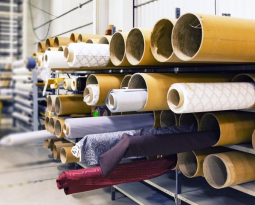Utah Patent of the Month – November 2021
As the computer industry trends towards smaller devices and smaller components with better power, the applications are expanded. 30 years ago, we would never have thought about wearing a computer on our wrist but now we have options for smart watches, Fitbits, and more. These powerful devices need sensors, detectors, and more computing hardware. Teveri, LLC has worked to develop wires that support these needs.
Their wires are stretchy and flexible, made from liquid metal, and able to elongate to twice their length. Recently, they have designed a touch sensor that works with these flexible wires to detect a change in an electrical attribute within the device.
The touch sensors are made of reversibly deformable and mechanically tunable fluidic cavities. These cavities contain liquid metal – the same material the wires are made from. Within this setup, a sensor block is positioned with the required circuitry. These layouts may use multiple cavities and wires, depending on the application. As the cavities are pressed, electrical currents are changed and a touch event can be associated. Any deformation of Teveri’s wires is detectable. This creates opportunities to measure, detect, and sense properties that cannot be monitored with any other technology.
An example of an application could be a button for controlling volume on a phone. The touch sensor device is placed within the fluidic cavity with liquid metal wires positioned as a switch. Since the liquid metal wires are conductive, they have an inherent conductive characteristic. As physical pressure is applied to the button (or anywhere along the wire), the shape of the cavity is changed, moving the electrical impedance along and used to initiate electrical resistance based commands. The combination of the wires and touch sensors allow for biometric performance monitoring, gesture and movement sensing, and proximity sensing. This can be ideal for wearable technology.
Are you developing new technology for an existing application? Did you know your development work could be eligible for the R&D Tax Credit and you can receive up to 14% back on your expenses? Even if your development isn’t successful your work may still qualify for R&D credits (i.e. you don’t need to have a patent to qualify). To find out more, please contact a Swanson Reed R&D Specialist today or check out our free online eligibility test.
Who We Are:
Swanson Reed is one of the U.S.’ largest Specialist R&D tax advisory firms. We manage all facets of the R&D tax credit program, from claim preparation and audit compliance to claim disputes.
Swanson Reed regularly hosts free webinars and provides free IRS CE and CPE credits for CPAs. For more information please visit us at www.swansonreed.com/webinars or contact your usual Swanson Reed representative.

















